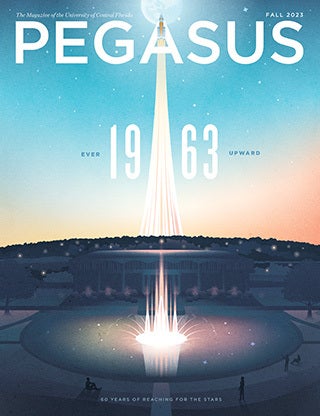The largest paper ever published on radar observations of near-Earth asteroids has been released, compiling years’ worth of data from the Arecibo Observatory in Puerto Rico.
Using delay-Doppler radar observations collected from the observatory between December 2017 and December 2019, the study includes 191 asteroids’ radar cross sections and Doppler-frequency broadening. This data can be used as clues to asteroids’ spin periods and sizes, as well as polarization information for 110 of them, which could help to understand the surface and subsurface properties. Thirty-seven asteroids were presented in greater detail with more refined size evaluation, preliminary shape evaluation, information about how reflective they are in radar, and if the radar observations match with the visual and near-infrared observations.
The work was published recently in the Planetary Sciences Journal.
As one of the only papers of its kind that includes a large number of asteroid targets, the study serves as a “treasure trove of data” for planetary scientists given that most existing literature only focuses on one object at a time, says Anne Virkki, the study’s lead author and a researcher with the Department of Physics at the University of Helsinki in Finland.
The study’s ample amount of asteroid data is important for many reasons, the researchers say.
For instance, the characteristics of several potentially hazardous asteroids are included in the paper, which is notable because observations from Arecibo have contributed to past planetary defense efforts, including the recent DART mission.
Although Arecibo’s planetary radar group focuses on supporting NASA’s planetary defense program, the study’s wealth of information has economic benefits as well, supplying asteroid mining companies with data on metal-rich and ice-rich near-Earth asteroids containing resources of interest.
The diversity of asteroid data in general also clues other scientists in on the formation and evolution of the solar system.
Radar is the best ground-based tool for near-Earth asteroid characterization, says Flaviane Venditti, head of Arecibo’s Planetary Radar Science Group and study co-author.
“The amount of valuable data collected is unique, and these results could not have been achieved with any other existing facility,” Venditti says.
Though the telescope collapsed in 2020, scientists continue to analyze the backlog of data gathered from it.
Additional Findings
Through the study, scientists found two near-Earth asteroids with abnormally high radar albedos, or reflectivity in radar, suggesting that they could be metal-rich. The possibility of two more is significant; few metal-rich NEAs have been found so far.
Another high radar albedos near-Earth asteroid, rare equal-mass binary 2017 YE5, was suggested to have ice below its surface instead of metal richness due to its low bulk density. Classified in the study as a D-type NEA, 2017 YE5 is potentially the first of its kind observed using radar.
More classifications were made with scientists listing five possible enstatite-rich, or E-type, asteroids that had not been identified as such previously, using polarization information from radar.
Accompanying the data were numerous 7.5m resolution asteroid images, a feature uncommon in existing literature. No other ground-based instrument than radar can take images at a resolution finer than 10m of any celestial objects further than the moon, and until the telescope’s collapse in 2020, the Arecibo radar was the most powerful and sensitive planetary radar in the world.
Future Research
Though plentiful in its data, the study leaves doors open for further research.
“This paper is like a teaser for a full movie,” Virkki says.
Venditti says the data from the research shows how rich the information obtained with radar is.
“In fact, there’s still a lot of high-quality data to be analyzed in detail, which could even support planning future spacecraft missions to small bodies,” Venditti says.
Funding
Funding for the research was provided through NASA’s Near-Earth Object Observations program. The University of Central Florida manages the Arecibo Observatory for the U.S. National Science Foundation under a cooperative agreement.
Study title: Arecibo Planetary Radar Observations of Near-Earth Asteroids: 2017 December–2019 December
Researchers’ Credentials
Virkki received her doctorate in astronomy from the University of Helsinki in 2016. She currently works at the University of Helsinki in the planetary science research group. Virkki joined the Arecibo Observatory in April 2016 and the University of Central Florida in April 2018. She served as head of Arecibo’s Planetary Radar Science Group from 2018 to 2021.
Venditti received her doctorate in space engineering at the National Institute for Space Research in Brazil in 2013. She joined Arecibo Observatory in 2017 and has served as head of its Planetary Radar Science Group since 2021.
Other Arecibo planetary radar members who contributed to the study include observatory scientists Sean Marshall and Maxime Devogèle, and data analysts Luisa Zambrano-Marín and Anna McGilvray.





